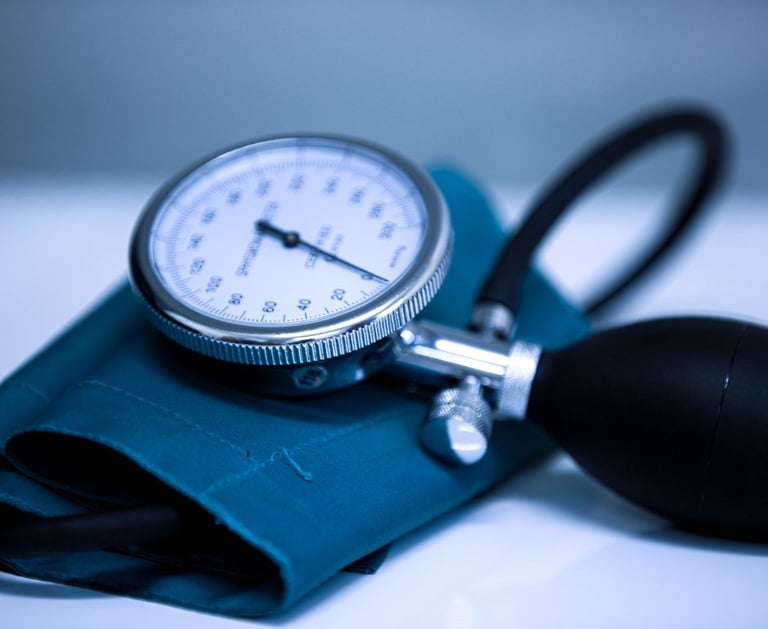Blood Pressure: Why it is important in veterinary patient care.


This post may have affiliate links. As an Amazon Associate, we earn from qualifying purchases from those links. This does not cost you anything and helps support the Sanctuary and all the animals in our care. This has no bearing on our reviews and comparisons. We will do our best to keep things fair and balanced to assist you in making the best decision for you and your pets.
As pet owners, we want to ensure that our furry friends are in the best of health at all times. Monitoring your pet's blood pressure is an essential aspect of maintaining their well-being. High blood pressure or hypertension as well as low blood pressure or hypotension can affect pets just as it affects humans. It can cause damage to organs such as the eyes, heart, kidneys, and brain. Therefore, it is vital to keep a check on your pet's blood pressure regularly. In this article, we will discuss the importance of monitoring blood pressure in dogs and cats, the different types of machines used to measure blood pressure, and the technique needed for both.
First, let's talk about what blood pressure its, exactly. Blood pressure is the force exerted by the blood against the walls of the blood vessels. In humans, high blood pressure is a common medical condition that can cause heart disease, stroke, kidney disease, and other health problems. Similarly, high blood pressure can be a significant problem for our furry friends. It can affect their organs and cause damage over time.
Blood pressure monitoring is crucial for pets with underlying health conditions such as diabetes, kidney disease, heart disease, and hyperthyroidism. High blood pressure can worsen these conditions, leading to further health problems.Pets can also develop high blood pressure due to obesity, stress, and aging. Since these conditions can often go unnoticed, regular blood pressure monitoring can help detect the problem early, allowing for prompt treatment. On the other hand, low blood pressure can also be a concern for pets, especially during surgery or when undergoing anesthesia. Monitoring blood pressure can help veterinarians adjust medication doses to ensure that pets remain stable and safe. Blood pressure monitoring is essential for pets of all ages, but it is particularly important for senior pets. Aging pets are more susceptible to developing high blood pressure and other medical conditions. To measure blood pressure,veterinary staff use either a Doppler or an oscillometric machine. Both machines are reliable, and they work differently.
Doppler machines measure blood pressure using sound waves. The veterinary staff will place a cuff around the pet's leg, tail, or just above the paw and inflate it to a specific pressure. They will then use a handheld device that emits sound waves and listens for the blood flow through the artery as the pressure in the cuff is released. The Doppler machine can detect the systolic blood pressure, which is the pressure when the heart contracts, and the diastolic blood pressure, which is the pressure when the heart relaxes Doppler machines are relatively inexpensive and easy to use. They are also portable, which makes them ideal for use in the field or during house calls.
Oscillometric machines measure blood pressure using vibrations. The veterinary staff will place a cuff around the pet's leg, tail, or just above the paw and inflate it to a specific pressure. The machine then measures the vibrations caused by the blood flowing through the artery. Oscillometric machines can detect the mean arterial pressure, which is the average pressure in the artery during a single heartbeat. They are also faster than Doppler machines, and they can measure blood pressure even when the animal is moving. Oscillometric machines are more expensive than Doppler machines. They can detect changes in blood pressure quickly.
To measure blood pressure with a Doppler machine, the veterinary staff will follow these steps:
Prepare the animal: The animal should be calm and relaxed. Laying quietly on their side. The fur should be shaved or clipped from the area where the cuff will be placed. Apply ultrasonic gel where the Doppler will be placed.
Inflate the cuff: The cuff should be inflated to a pressure that is higher than the pet's systolic blood pressure. This can be estimated based on the animal's breed, size, and health status.
Listen for the pulse: The veterinary staff will use the Doppler device to listen for the pulse in the artery. Again ultrasonic gel can help improve the sound quality. It will be necessary to move the device around until they hear the pulse clearly.
Determine the systolic blood pressure: The veterinary staff will slowly release the pressure in the cuff while listening for the pulse. The first sound that is heard is the systolic blood pressure.
Record the results: The veterinary staff will likely take three readings and record the systolic and diastolic blood pressure readings.
To measure blood pressure with an oscillometric machine, the veterinary staff will follow these steps:
Prepare the animal: The animal should be calm and relaxed. They may be standing, but usually they are lying down.
Place the cuff: The cuff should be placed snugly around the leg, tail, or above the paw, depending on the size of the animal.
Turn on the machine: The machine will automatically inflate the cuff and begin measuring the blood pressure.
Wait for the reading: The machine will display the mean arterial pressure, which is the average pressure in the artery during a single heartbeat.
Record the results: The veterinary staff will record the mean arterial pressure reading.
For more information, check out these resources:
Whether you utilize Doppler or oscillometric machines, they both require a skilled operator to use them effectively. Ultimately, the choice of machine will depend on the veterinarian's preference, the animal's size and health status, and the situation in which the measurement is being taken. In conclusion, monitoring blood pressure is an essential aspect of maintaining your pet's health. High blood pressure can cause damage to organs such as the eyes, heart, kidneys, and brain. Regular blood pressure monitoring can help detect the problem early, allowing for prompt treatment. During sedation and anesthetic procedures, blood pressure helps to keep the animal safe. Doppler and oscillometric machines are reliable and accurate ways to measure blood pressure in pets. Regardless of the machine used, it is important to ensure that the animal is calm and relaxed during the measurement.
Blood Pressure - why it's important to patient care.
Blood pressure is an essential metric in patient care.
